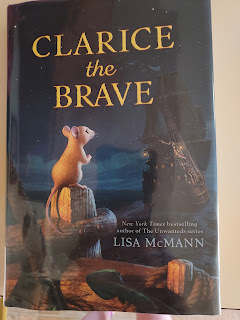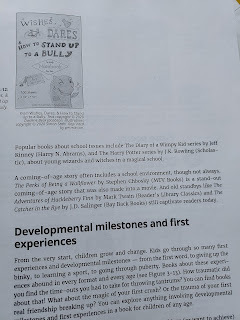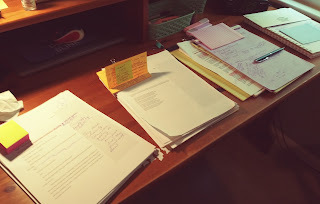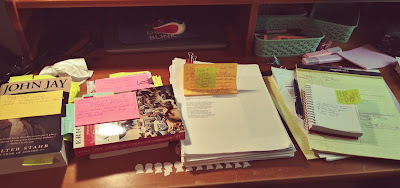Marcia Thornton Jones's Blog, page 47
June 13, 2022
The Face of Real Life in Escapist Fiction (Diane Magras)

Art by Vivienne To
Who couldn’t use a good escape these days? With a worldwide pandemic, climate disasters, threats to essential human rights, and war dominating the news and social media, it’s not hard to feel that the world is crumbling.
This is where escapes come in. And middle grade adventures—fast-paced, otherworldly, and all encompassing—provide incredible escapes. While putting characters in immense danger, these works give young readers an essential distance: Kids can experience chases, battles, and monsters—but in their minds alone.
Yet those escapes can also plant questions and awareness that will give young readers strength—if the author takes advantage of this opportunity.
I’m committed to writing thoughtful stories that offer an escape, yet also address important themes. From the distance that fiction provides, I can bring up powerful topics—gently, and shrouded in fantasy. I hope this technique will help young readers who are experiencing real-world threats themselves feel seen and respected. I also hope it will introduce other young readers to challenging yet rewarding ideas—or strengthen ideas, modeling how this world might deal with issues they already know and care about.
Take the worldwide pandemic. There’s an obvious parallel between that and my third book, Secret of the Shadow Beasts. In my story, a country faces a terrible threat: Shadow beasts emerge at night to decimate humankind with their fatal venom. The government issues warning and rules, but some people ignore them. The kids in my cast battle the monsters (they’re the only ones who can stop the shadow beasts, being immune to the venom)—and find themselves in danger when adults break rules and bring shadow beasts down on all of them. My protagonist—the brave, emotionally vulnerable, and creative Nora Kemp—struggles with a situation that’s tragically common in our world as well: the loss of a parent to a nationwide threat.
Secret of the Shadow Beasts also has a tie-in to climate justice: The shadow beasts themselves come from the destruction of the country’s essential ecosystems. Nora and her companions value the environment and are frustrated that people in the past created the disasters they’re dealing with in their present day. These kids are tasked with the most dangerous work in their world—and are eager to understand why and how it’s become like that. And stop it as much as they can—a bit like the youthful climate justice warriors of our world.
And one more: It’s essential for people in our world to know the full stories of our nations’ histories, the grim injustices, the racism and colonialism, and the mistakes on which our societies were founded. Grim injustices and mistakes of the past play a huge role in Secret of the Shadow Beasts—and it’s Nora and Amar, the history-loving leader of her group, who are especially committed to delving into the truth and bringing to light what’s happened.
Kids are heroes. That’s clear in my book, and it’s something that I want my readers today to feel deep in their bones: the fact that theyhave the potential to do great things, in small ways as well as large, with all of it forming meaningful steps toward a better world.
Often, escapist fiction fulfills desires: to have an adventure, a tight-knit group of found family around you, to emerge from conflict a hero. And that’s part of Secret of the Shadow Beasts, only some of these are not just wish fulfillment but things that I want to see come true today. Why can’t we have a world where:
children’s voices are essential, trusted, and powerful;
LGBTQIA+ children and adults are respected, their needs provided as a matter of course;
women of color hold positions of immense authority,
society values the greater good; and
most people listen to reason?
Sometimes our world is so bleak that sinking into a fantasy with warmth, humor, and nonstop action is one of the best ways for kids to find comfort. But we children’s authors have the opportunity to do more: We can show our young readers a reflection of the truth, a path forward, and prepare them for their own days to come.
~

Photo credit: Michael Magras
Diane Magras (she/her) is the award-winning author of the New York Times Editors’ Choice The Mad Wolf’s Daughter, as well as its companion novel, The Hunt for the Mad Wolf’s Daughter. Secret of the Shadow Beasts is her ambitious third book. An unabashed fan of libraries (where she wrote her first novel as a teenager), history (especially from cultures or people who’ve rarely had their story told), and the perfect cup of tea, Diane lives in Maine with her husband and son.
June 12, 2022
CLARICE THE BRAVE: An amazing MG story of Friendship and Courage
I recently read a wonderful story I wanted to share this month on Smack Dab. CLARICE THE BRAVE by Lisa McMann was on my to-read list for awhile and I finally found a copy at my local library. I am so glad I read it. It has been one of the most uplifting and unique stories I've read in a long while.

Here is the blurb from the book:
Clarice is a young ship mouse grieving the loss of her mother when a mutiny forces her onto a small, leaky boat with a dangerous cat. Worse, she is separated from her younger brother, Charles Sebastian, who is trapped aboard the great ship.
Clarice and Charles Sebastian were taught to always be careful—but they will need to grow bold if they are to survive . . . and find one another again.
Here is my review: "
A heart-felt and harrowing adventure on the high-seas told from the POV of a mouse named Clarice. When a mutiny occurs on the ship - the only home Clarice has ever known - she gets separated from her brother Charles Sebastian and ends up on another boat with Special Lady - the cat who ate her sister. Desperate times force Clarice to do things she never imagined, including putting her trust in her sworn enemy. The fully rendered non-human characters help readers sympathize with the dangers faced, and relate to all the emotional highs and lows they experience as humans. We can learn a lot from these tiny creatures.
A tender and emotional journey of love, friendship, and learning to trust yourself. Highly recommended."
Darlene Beck Jacobson loves adventure but has never had one on the high seas. She writes her stories from her home in NJ where rabbits and squirrels roam the backyard.
June 11, 2022
10 Ways to Look at Something Called “Slump"
10. I’m a fraud, a phony. I would have been happier without a taste of success. Drat that dumb luck.
9. A slump is nature’s way of telling you to stop.
8. This is terrible. This is awful. How did I get here? Where did I lose my mojo?
7. Someone, break me out of this!!!
6. At least I’m in the running for the Guinness Book of Records, Most Drastic Slump.
5. Maybe I just need a vacation.
4. Slump? What’s that? I’m just recharging my batteries.
3. I did something good before, so maybe I can to do something good again. Right?
2. Hey, Slump! You’re not the boss of me.
1. I don’t believe in slumps.


Middle grade and YA author Jody Feldman may not have had a book come out between 2015 and 2022 (those pictured above), but she’s a firm believer in Point #2. During these years—especially the height of Covid—she’s been writing her tail off, and is about to re-emerge big-time, she says, optimistically.
June 8, 2022
I AM NOT QUITTING -- by Jane Kelley

I have no idea why I felt the need to spell out that vow on November 18. Or why it required all caps to stiffen my resolve. I need to remind myself not to quit pretty much every week. Sometimes every day. Every hour. Not every minute, though. That would be pretty counterproductive. Repeating the mantra would fill my brain and make it impossible to keep writing. Which is after all the goal. To keep going no matter how weary we are. Or how people mock our dreams as if we were as mad as Don Quixote.
 Bas relief by Anna Vaughn Hyatt Huntington; poem by Archer M. Huntington -- in the courtyard of the Hispanic Society of America Museum, New York City
Bas relief by Anna Vaughn Hyatt Huntington; poem by Archer M. Huntington -- in the courtyard of the Hispanic Society of America Museum, New York CitySo what do we do when we feel like Don Quixote riding his old nag, Rocinante? When chasing the dream has worn us down to skin and bones? Can we summon the energy to lift our head to see where we're going? Does it even matter? We won't get there anyway.
Wait. Look closer at the inscription. I'll zoom in.

"Hath winged Pegasus more nobly trod than Rocinante stumbling up to God?"
Did that phrase cheer me up? Sometimes it can be inspiring to remember that the act of writing is a noble pursuit. It isn't vanity. Even in Don Quixote's case, his efforts did inspire those around him to remember that life was more than the daily grind. His purpose was to return to the age of chivalry. What is mine?
Back to my journals I go. Why did I want to write this novel in the first place? What inspired me? It surely wasn't the image of myself beating my head against a computer screen for TWO YEARS to write THIRTEEN DRAFTS in hopes of placing the book with a wonderful editor who will ask me to REVISE IT AGAIN and probably AGAIN.
I've been around a while. I know that writing a novel is at best intermittently fun and mostly frustrating.
So then why?
Because I have something I want to communicate. Mostly that something is the importance of persistence. Of keeping at it. Because as Trail Blaze Betty says, "The only way to fail is to quit." And why does she, a character in my first novel, say that? Because I needed to hear it. Again and again.
Persistence is a common theme of mine. Characters have to keep trying, against odds, in order to get what they want. Because that is true for anyone and anything.
So here is the variation on that theme in my current work in progress.
 Remember -- it isn't FIND your place. It's MAKE your place.
Remember -- it isn't FIND your place. It's MAKE your place.Of course that advice applies to my poor protagonist, whom I am currently making miserable so that she can in the end succeed beyond her wildest dreams.
It's also a message to me. One doesn't become a writer by stumbling upon a novel that someone else has written but forgot to claim. One becomes a writer by working at it. Even on the bad days. Especially on the bad days. Because that's how you get the job done.
JANE KELLEY is the author of NATURE GIRL, whose heroine accomplished her goal, and the work-in-progress EVA, who is en route. And is NOT QUITTING.
June 2, 2022
Seeking Motivation
Seeking Motivation
As I’m writing this, it’s June 1, and I’ve told myself for months that on June 1, I will begin to write my next manuscript. It’s past noon on June 1. Have I started? No, I have not. Will I start today? Well, maybe. Probably. As a former longtime journalist, I often push right up against deadlines—but I do make them. Usually. Even if it’s almost midnight tonight before I write word one.
So how do I get motivated?
1. Do something completely different for a while. Take a walk. Okay, so it’s 90 degrees out right now, sun mixed with clouds, going up to a forecast high of 93. An outdoor walk sounds a little intense.
2. Work on something else. There’s always work to be done for my book blog (that’s what usually happens, I turn to my book blog. It is an immense, pleasurable source of procrastination). Look at the edits for my manuscript that’s coming out in the spring. But that’s intense too, for other reasons. Think about a freelance piece I need to write. Work on a different manuscript that might need some tuning up. Query agents and publishers about various other manuscripts (way too stressful, and anxiety-producing. The phrase “I think I’ll have to pass” has seared itself into my brain).
3. This is something that works when I’m in the middle of writing a manuscript and I’m stuck: Have two of the characters embark on a conversation. Could this work to start a manuscript? Perhaps.
4. Wait until later. After dark. Watch as the clock creeps closer to midnight. And sit down and hope the words emerge.
--Deborah Kalb
@font-face {font-family:"Cambria Math"; panose-1:2 4 5 3 5 4 6 3 2 4; mso-font-charset:0; mso-generic-font-family:roman; mso-font-pitch:variable; mso-font-signature:3 0 0 0 1 0;}@font-face {font-family:Calibri; panose-1:2 15 5 2 2 2 4 3 2 4; mso-font-charset:0; mso-generic-font-family:swiss; mso-font-pitch:variable; mso-font-signature:-536859905 -1073732485 9 0 511 0;}p.MsoNormal, li.MsoNormal, div.MsoNormal {mso-style-unhide:no; mso-style-qformat:yes; mso-style-parent:""; margin:0in; mso-pagination:widow-orphan; font-size:16.0pt; font-family:"Times New Roman",serif; mso-fareast-font-family:Calibri; mso-fareast-theme-font:minor-latin;}p.MsoListParagraph, li.MsoListParagraph, div.MsoListParagraph {mso-style-priority:34; mso-style-unhide:no; mso-style-qformat:yes; margin-top:0in; margin-right:0in; margin-bottom:0in; margin-left:.5in; mso-add-space:auto; mso-pagination:widow-orphan; font-size:16.0pt; font-family:"Times New Roman",serif; mso-fareast-font-family:Calibri; mso-fareast-theme-font:minor-latin;}p.MsoListParagraphCxSpFirst, li.MsoListParagraphCxSpFirst, div.MsoListParagraphCxSpFirst {mso-style-priority:34; mso-style-unhide:no; mso-style-qformat:yes; mso-style-type:export-only; margin-top:0in; margin-right:0in; margin-bottom:0in; margin-left:.5in; mso-add-space:auto; mso-pagination:widow-orphan; font-size:16.0pt; font-family:"Times New Roman",serif; mso-fareast-font-family:Calibri; mso-fareast-theme-font:minor-latin;}p.MsoListParagraphCxSpMiddle, li.MsoListParagraphCxSpMiddle, div.MsoListParagraphCxSpMiddle {mso-style-priority:34; mso-style-unhide:no; mso-style-qformat:yes; mso-style-type:export-only; margin-top:0in; margin-right:0in; margin-bottom:0in; margin-left:.5in; mso-add-space:auto; mso-pagination:widow-orphan; font-size:16.0pt; font-family:"Times New Roman",serif; mso-fareast-font-family:Calibri; mso-fareast-theme-font:minor-latin;}p.MsoListParagraphCxSpLast, li.MsoListParagraphCxSpLast, div.MsoListParagraphCxSpLast {mso-style-priority:34; mso-style-unhide:no; mso-style-qformat:yes; mso-style-type:export-only; margin-top:0in; margin-right:0in; margin-bottom:0in; margin-left:.5in; mso-add-space:auto; mso-pagination:widow-orphan; font-size:16.0pt; font-family:"Times New Roman",serif; mso-fareast-font-family:Calibri; mso-fareast-theme-font:minor-latin;}.MsoChpDefault {mso-style-type:export-only; mso-default-props:yes; font-size:16.0pt; mso-ansi-font-size:16.0pt; mso-bidi-font-size:16.0pt; mso-fareast-font-family:Calibri; mso-fareast-theme-font:minor-latin;}div.WordSection1 {page:WordSection1;}ol {margin-bottom:0in;}ul {margin-bottom:0in;}
June 1, 2022
Smack Dab News
Smack Dab Author Darlene Beck Jacobson had her verse novel WISHES, DARES, AND HOW TO STAND UP TO A BULLY featured in the 3rd edition of WRITING CHILDREN'S BOOKS FOR DUMMIES.

Check out page 55:

May 29, 2022
Neither Here Nor There...
By Charlotte Bennardo
 Photo by Julia M Cameron, Pexels
Photo by Julia M Cameron, Pexels
I love author visits/events where I get to read or talk about my book, other books, and answer questions. With the pandemic, I HATED doing the virtual/Zoom events because there was no interaction. I was talking to a screen and sometimes the connection wasn't the greatest. I know some people love them because of the no traveling, but to me they weren't worth the effort. I'd spend all this time creating a presentation and if it was recorded, I never knew if anyone actually watched the presentation. And then I hardly made few, if any, sales. Those were two, three hours of my life wasted. Zoom presentations had some interaction, but it's not the same as meeting people. I can see, by watching their faces, if they're starting to get bored, or if they're waiting to ask a question or that I should just wish them a good day because they're not interested. Now that things are slowly coming back, like the Collingswood, Poughkeepsie, and a few other book festivals/events, I feel energized. I feel like we're coming back to normal. If you can, I urge you to drag everyone out to these events to bring them back up to the level they were pre-pandemic. Author visits in schools are back up- and from what I hear from my picture book and middle grade author friends, they're still doing mostly virtual events, although that may be changing. Maybe with the new school year, more authors, especially midlist ones (you know, not famous but still great authors), will get more bookings because it can be the lifeblood of their career. I love doing author visits but I'm at the stage where I'm no longer doing them for free (and no one should ask an author to do that). So invite an author in for a visit!
Charlotte writes MG, YA, NA, and adult novels in sci fi, fantasy, contemporary, and paranormal genres. She is the author of the middle grade Evolution Revolution trilogy, Simple Machines, Simple Plans, and Simple Lessons. She co-authored the YA novels Blonde OPS, Sirenz, and Sirenz Back in Fashion. She has two short stories in the Beware the Little White Rabbit (Alice through the Wormhole) and Scare Me to Sleep (Faces in the Wood) anthologies. Currently she is working on several novels for both children and adults and her MFA. She lives in NJ with her family, two demanding cats, and a crazy squirrel couple who just moved into her backyard oak tree.
May 25, 2022
Virtuals (Holly Schindler)
I love virtual visits.
I mean love.
In the first place, I'm not much of a traveler. I'm enough of a lifelong introvert that the mere idea of getting on a plane for an author event makes me nauseous.
Besides that, travel is expensive. And time-consuming. It's never just hte time you spend on the road, either. You have to prepare--and I don't mean just pack. You have to mentally get ready to perform, in a sense.
But virtual visits?
I can be anywhere, on any date. I can be writing up until ten minutes until the actual presentation. I'm sill here, where I can take care of my family. I don't have to make separate arrangements. I'm home, which means I'm still in my comfort zone, and am more relaxed when we have our visits.
When The Junction of Sunshine and Lucky hit state readers' lists, the requests for visits exploded. I accepted all those requests, as long as the schools were willing to let me meet virtually--even the schools near my own hometown. By doing it that way, I was able to meet with every single school that asked. I had time for them all. I didn't have to turn a single class down because of a scheduling conflict.
And it was wonderful.
I met with honors classes and book clubs. I met with students who were already established readers and with kids who were described as "kinda readers" by their librarians. I saw the original artwork inspired by the book. I met with kids in so many states--Minnesota and Iowa and Ohio and Texas and Florida and Arkansas and Massachusetts and Oregon, etc.
I wouldn't have been able to go to half of those schools, without the possibility of virtual visits.
Virtuals have also given me the ability to be part of an audience. When a California-based school brought The Junction to the stage, I was able to see it! The class wrote the script, designed the set, the whole shebang. I watched two different productions (with two different sets of actors).
And it was wonderful.
I'd never have been able to see it, without the magic of virtual visits.
I'm so grateful I live and write in an era when it's possible to be in any state at any given time. That moment when the light comes on my webcam is one of the most exciting moments of all...
~
Holly Schindler is an award-winning author of books for readers of all ages. Her MG The Junction of Sunshine and Lucky now has an accompanying activity book. Check HollySchindler.com for more info.
May 23, 2022
Powerful Writing Embodies Imagination: Smack Dab in the Imagination by Dia Calhoun
The poet’s eye, in fine frenzy rolling,
Doth glance from heaven to earth, from earth to heaven;
And as imagination bodies forth
The forms of things unknown, the poet’s pen
Turns them to shapes and gives to airy nothing
A local habitation and a name.
--William Shakespeare, from A Midsummer’s Night’s Dream, act 5. scene 1. lines 12-17, in The Riverside Shakespeare
Fiction writers soon learn that specific details create a real world for the reader. Poets take this even further. Ideas, action, are all most vividly rendered when they are dressed in images and metaphor. A poet tells the whole story this way.
But what kind of details or "bodies? " The last line of the quote hits the mark: " ...gives to airy nothing/A local habitation and a name." You can easily name six things you see as you walk out in the world: For example: a streetlight, grocery store, post office, bench, park. While those are all specifics they are generic. They give no clue to the character, the local habitation, of what we see. We could be in Anytown, Anywhere. Depending on the type of street light, we could even be somewhere hundreds of years ago.
To create a local habitation, try this writing exercise: --Take the list above or make a list of your own. --Create four different story locations with everything on the list. --For each location create "a local habitation" by adding descriptive details or phrases to the items on the list.
For example:Street light: space-age silverGrocery store: convenience store with a fan in the doorway.Post Office: A closed sign tipped sideways in the only window of the cinderblock post office.Bench: Filigreed, black metal benchPark: A triangle of green squeezed between condos.
What does this backdrop tell you? And some contrast of detail is good--you usually don't want your details to add up to a generic place either.
You can do the same exercise for describing minor/walk-on characters. In fiction, you can't call out everything with this level of detail--the trick is to call out the details that most create the mood or setup you want. Think of a painting. The painter uses composition and color technique to draw the eye to what is most important (the first reading).
My own early fiction drafts are often laden with generics--you get the story out on the page any way you can, yes? But as I've studied and worked at the craft of writing poetry, I find myself beginning more and more with the specific image. With practice, a writer can create a habit of creating local habitations.
May 15, 2022
How to Engineer a Revision
 Step One: Divide Points of View
Step One: Divide Points of ViewIn my current WIP, I am working with two distinct points of view moving through simultaneous timelines against a hefty historical event.The challenge is making these points of view distinct without compromising either timeline, while still making sure that the event – a coming together of complex social and political systems – is easy enough for young readers to follow. Easy peasy lemon squeezy.
Not.
So how does one weave together all of these elements into a cohesive story? I first came upon the term “story engineering” in Larry Brooks’ excellent book, Story Engineering: Mastering the 6 Core Competencies of Successful Writing (Writers Digest Books, 2011). Story engineering is not just about planning or outlining, but certainly that’s a part of the process. In the same way that engineers rely on blueprints to create a structure that bears weight and resists the elements, writers arm themselves with a strategy to create an equally structurally sound foundation upon which the literary elements may rest. It's also a good approach as one begins the revision process..
Looking for information on how to engineer two points of view at once, I went to my go-to for information on writing strategies. Lorin Oberweger’s Free Expressions Seminars .
And –of course – I found the perfect workshop: Non-Linear, Dual-Timeline, And Multiple POV Plotting with Donald Maass. No one does it better than Donald Maass. During the almost two-hour workshop, Donald offered step-by-step instruction, citing examples from ‘break-out’ fiction to support his process.
Returning to my WIP, I begin to engineer my two points of view and their plotlines. (This is a basic step-by- step that fits my particular narrative. For more information, especially as it relates to your project, you really really do need to check out Donald Maass’ workshops at Free Expressions.)
1. I divide the draft by points of view. It’s like having two separate stories. The parallel narratives need to be so tight, and so relevant, that one cannot exist without the other. While the two points of view need to be pronounced, and distinct, they need to be connected by theme.
2. I review the carryovers (transitions) between chapters to make sure the story of each point of view flow.
3. I review both timelines to make sure the scenes connected to the broader plot. This includes adding research as needed to make sure each scene is complete.
 Step Four: Combine the Points of View
Step Four: Combine the Points of View4. I then combine the two points of view into one story, aligning the events to strengthen the timeline and reinforce the causal chain. This means quickly establishing the narrative pattern, in which the points of view shift between the characters. It also means noting where additional chapters might be needed to complete the timeline.
5. To keep the reader oriented, I review each points of view to make sure the characters are distinct, reinforcing certain literary devices. These devices include vocabulary, sensibilities (world views), personality traits, and specific artifacts (such as diaries, pets or songs!).
Now the foundation is set, and the real work of revision can begin!!Allons-y!!
-- Bobbi Miller



